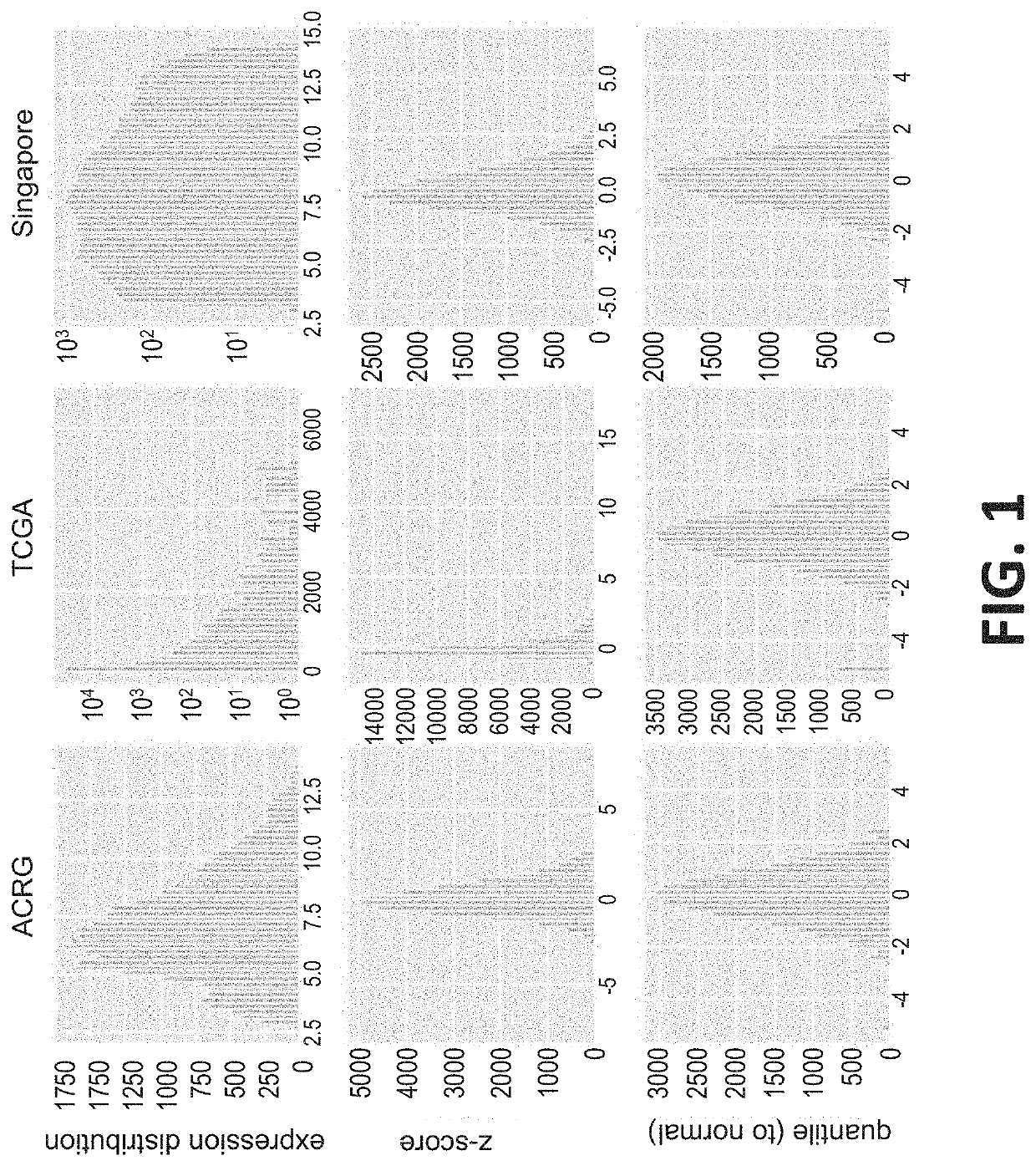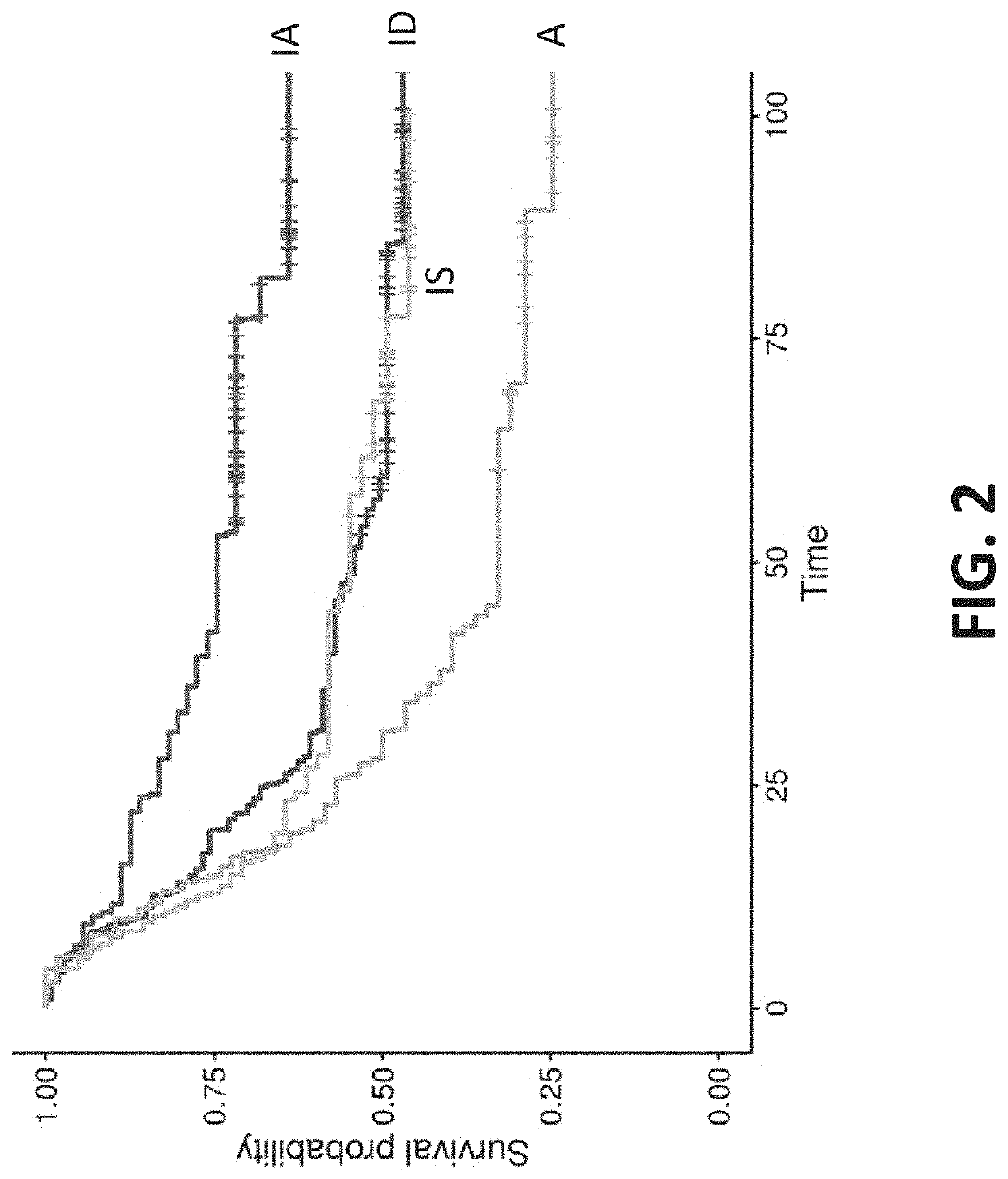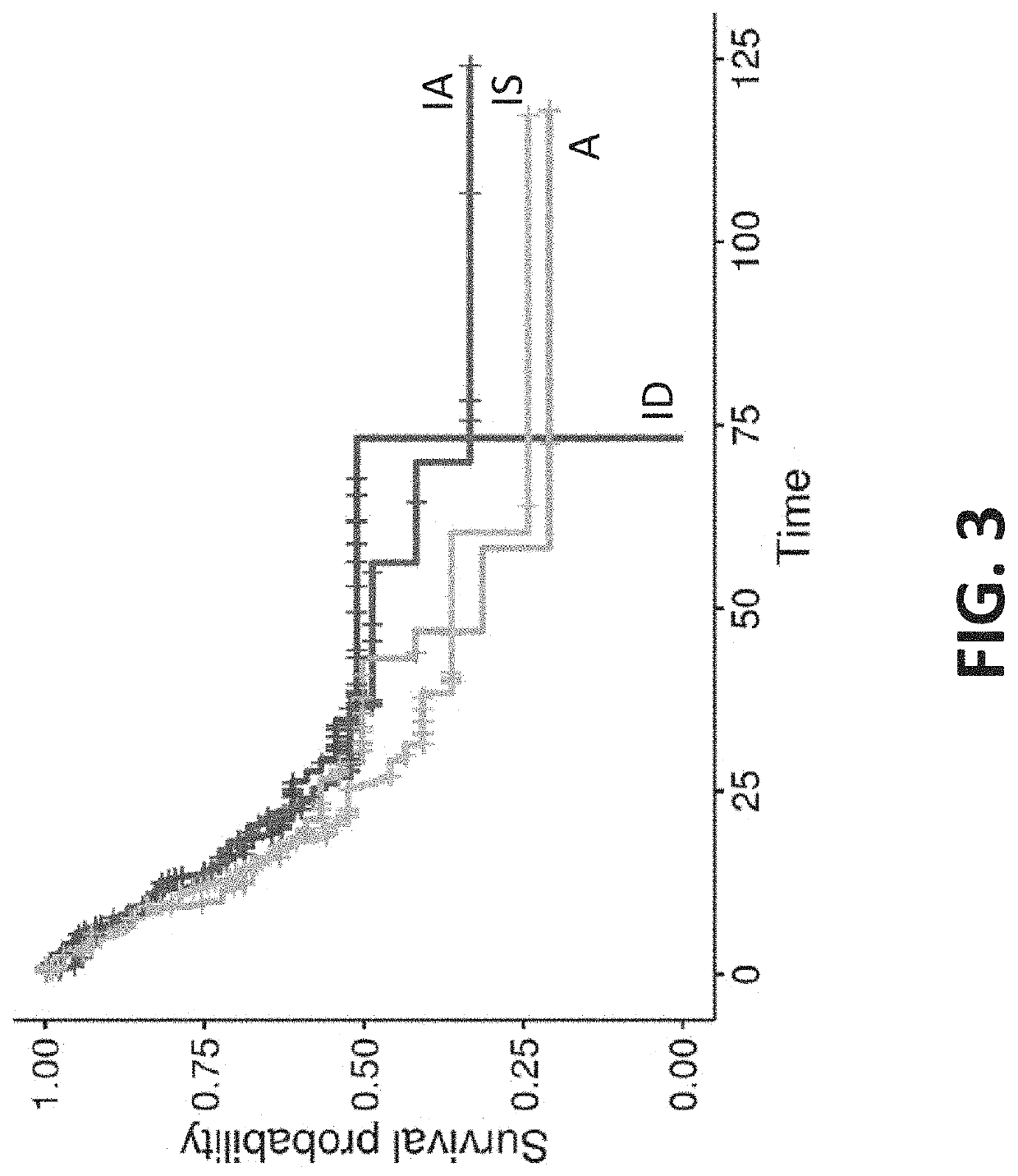Classification of tumor microenvironments
a tumor microenvironment and classification technology, applied in the field of classification of tumor microenvironments, can solve the problems of inability to accurately predict the response of an individual cancer to a particular therapy, substantial overtreatment, and high heterogeneity of cancers, so as to improve the overall survival probability and improve the progression-free survival probability
- Summary
- Abstract
- Description
- Claims
- Application Information
AI Technical Summary
Benefits of technology
Problems solved by technology
Method used
Image
Examples
example 1
Tumor Microenvironment (TME) Classification: Population-Based Classifier
[0958]The present disclosure describes the methodology to create a population-based Z-score classifier (a population-based classifier) that is able to stratify (or classify) tumor samples into four classes based on gene expression. As used herein, the four classes can also be referred to as tumor microenvironments (TME), stromal types, stromal subtypes, or phenotypes, or variations thereof. Also herein is described the analytical pipelines used to generate expression values from raw microarray (RNA) and RNA-sequencing data.
[0959]For data preprocessing, various technologies exist for measuring gene expression where each platform technology requires specific preprocessing of the raw data. The population-based classifier supports Affymetrix DNA microarray, high throughput next generation RNA sequencing, and in some aspects, can be extended to other technologies.
[0960]For microarray data, the Affymetrix chip procedu...
example 2
Application of Classifiers to Public Datasets
[0972]The classifiers described in Example 1 were used to analyze three publicly available datasets according to the population-based method, or classifier, as described herein. Datasets were normalized as described herein (FIG. 1). In FIG. 1, the top row of histograms shows the distribution of log 2 expressions of the Signature 1 and 2 genes, and shows that the datasets have different ranges and distributions. The RNA expression levels in the ACRG and Singapore were analyzed by micro-array (Affymetrix), whereas the RNA expression levels in the TCGA data are derived from RNA sequencing.
[0973]In the middle row of plots of FIG. 1, the population medians and Z-scores were computed. The distributions were all centered around 0 as expected, but that the overall shape of the distributions are different due to platform differences (micro-array and RNA-Seq). The bottom row of panels of FIG. 1 shows the expression (Z-score) values after quantile n...
example 3
Pre-Treatment Gastric Tumor Microenvironment RNA Signature Correlates with Clinical Responses to Checkpoint Inhibitor Therapy
[0995]Summary: A retrospective data analysis indicated that gastric cancer tumor microenvironment phenotypes correlated to clinical responses when patients were treated with targeted therapy, such as a checkpoint inhibitor. The analysis included 45 gastric cancer tumor samples. Data indicated that the immune active (IA) phenotype was uniquely responsive to the checkpoint inhibitor relative to the immune suppressed (IS), immune desert (ID), and angiogenic (A) phenotypes.
[0996]Background information, methods and results: A retrospective classification of 45 patients with gastric cancer who received pembrolizumab, were classified according to the population-based method of the present disclosure. RNA expression levels were measured by paired-end RNA-Seq and normalized prior to classification. The data are reported according to the RECIST Criteria, e.g. Complete R...
PUM
| Property | Measurement | Unit |
|---|---|---|
| molecular weight | aaaaa | aaaaa |
| molecular weight | aaaaa | aaaaa |
| time | aaaaa | aaaaa |
Abstract
Description
Claims
Application Information
 Login to View More
Login to View More - R&D
- Intellectual Property
- Life Sciences
- Materials
- Tech Scout
- Unparalleled Data Quality
- Higher Quality Content
- 60% Fewer Hallucinations
Browse by: Latest US Patents, China's latest patents, Technical Efficacy Thesaurus, Application Domain, Technology Topic, Popular Technical Reports.
© 2025 PatSnap. All rights reserved.Legal|Privacy policy|Modern Slavery Act Transparency Statement|Sitemap|About US| Contact US: help@patsnap.com



